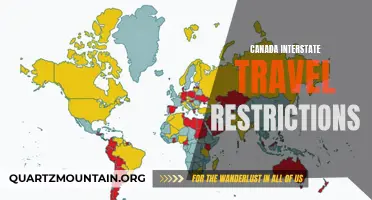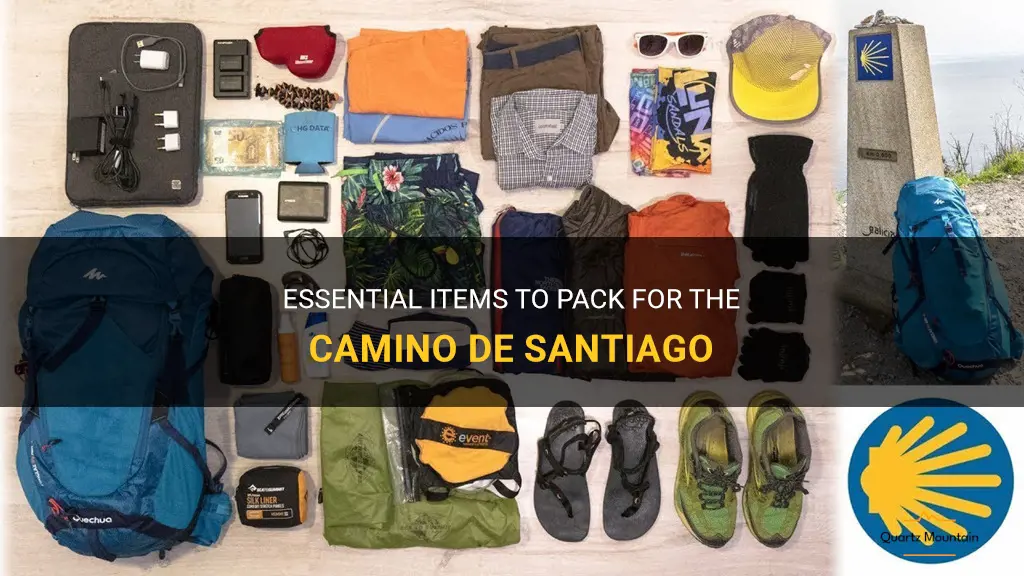
The Camino de Santiago, also known as the Way of Saint James, is a popular pilgrimage route in Spain that attracts thousands of walkers and hikers every year. Whether you are planning to embark on this spiritual journey for the first time or are a seasoned pilgrim, packing the right essential items is crucial for a successful and comfortable experience. From sturdy hiking boots to lightweight and multi-purpose clothing, this guide will take you through the must-have items that will ensure you are well-prepared for the challenges and adventures that await you along the Camino de Santiago. So grab your backpack and get ready to discover the essential items that will make your journey unforgettable.
| Characteristics | Values |
|---|---|
| Backpack | 30-45 liters |
| Sleeping bag | Lightweight and compact |
| Hiking boots | Comfortable and broken-in |
| Hiking socks | Moisture-wicking and cushioned |
| Quick-dry clothing | Shirts, pants, and underwear |
| Rain gear | Waterproof jacket and pants |
| Hat | Wide-brimmed for sun protection |
| Sunglasses | UV protection |
| Sunscreen | SPF 30 or higher |
| First aid kit | Band-aids, pain relievers, blister care |
| Toiletries | Toothbrush, toothpaste, soap, towel |
| Water bottle | Reusable and portable |
| Navigation | Map or GPS device |
| Money | Cash and credit/debit cards |
| Camino passport | Official document for stamping |
| Phone | for emergencies and communication |
What You'll Learn
- What are the essential items that should be packed for the Camino de Santiago?
- Are there any specific clothing items or gear that are recommended for the Camino de Santiago?
- Should I bring a sleeping bag or is accommodation provided along the Camino de Santiago route?
- What are some important non-essential items that could also be helpful to pack for the Camino de Santiago?
- Are there any specific items that should be left behind or avoided when packing for the Camino de Santiago?

What are the essential items that should be packed for the Camino de Santiago?
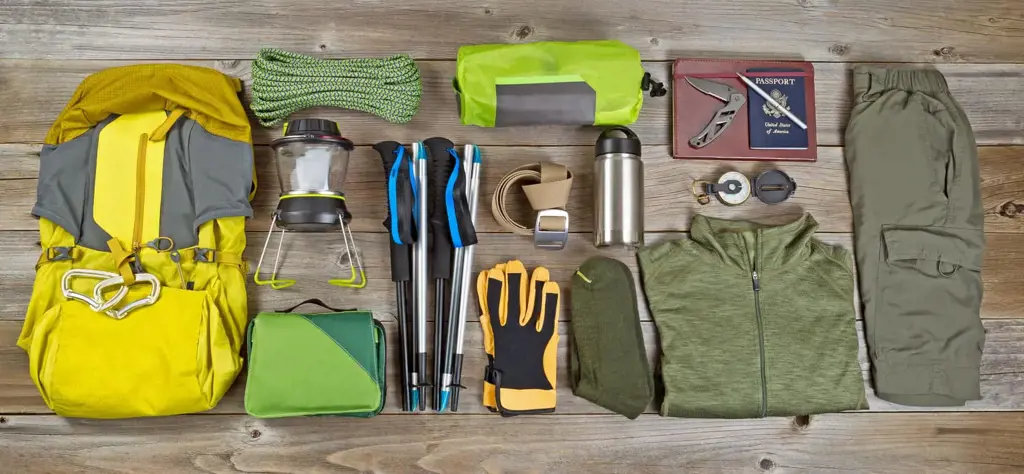
The Camino de Santiago is a popular pilgrimage route that attracts thousands of walkers and hikers from around the world. It is important to be well prepared and pack the essential items for this long and challenging journey. Here is a list of items to consider when packing for the Camino de Santiago.
- Backpack: A good quality, comfortable backpack is essential for carrying all your belongings throughout the journey. Look for a backpack with adjustable straps and a hip belt for better weight distribution.
- Hiking boots: Invest in a pair of sturdy hiking boots that provide good ankle support and have a thick sole for better traction on uneven terrain. Make sure to break them in before starting the Camino to avoid blisters.
- Clothing: Pack lightweight, moisture-wicking clothing that is suitable for layering. Consider the weather conditions during your journey and pack accordingly. You will need a mix of t-shirts, long-sleeved shirts, pants, shorts, and a waterproof jacket.
- Sleeping bag: Choose a lightweight sleeping bag that is suitable for the season you will be hiking in. Look for a compact and durable sleeping bag that can provide warmth and comfort during the nights.
- Toiletries: Pack travel-sized toiletries such as toothbrush, toothpaste, soap, shampoo, and toilet paper. You may also want to bring a quick-drying towel and some biodegradable wet wipes for convenience.
- First aid kit: It is important to have a basic first aid kit with essentials such as band-aids, antiseptic ointment, pain relievers, blister treatment, and any necessary prescription medications.
- Navigation tools: Bring a compass or a GPS device to help you navigate through the route. A guidebook or maps of the Camino can also be useful for planning your journey and finding accommodations along the way.
- Food and hydration: Carry a water bottle or hydration bladder to stay hydrated throughout the journey. Pack energy snacks, dried fruits, and nuts to provide fuel during long walks. It is also a good idea to carry a lightweight cooking set if you plan to cook your meals along the way.
- Money and documents: Keep your passport, ID, and any necessary permits in a waterproof bag. Bring some cash for emergencies and pre-load a travel card for easy access to money along the route.
- Miscellaneous items: Don't forget essentials such as a headlamp, sunscreen, sunglasses, a hat or cap, a Swiss army knife, and a lightweight dry bag to keep your belongings dry during rain showers.
Remember to travel light and only carry the essentials to avoid unnecessary strain on your back. It is also a good idea to test all your gear before starting the Camino to ensure it is comfortable and functioning properly. With the right preparation and packing, you will be well equipped to embark on the Camino de Santiago and have a memorable and fulfilling journey.
Essential Items to Pack for a Memorable Trip to St. Lucia
You may want to see also

Are there any specific clothing items or gear that are recommended for the Camino de Santiago?
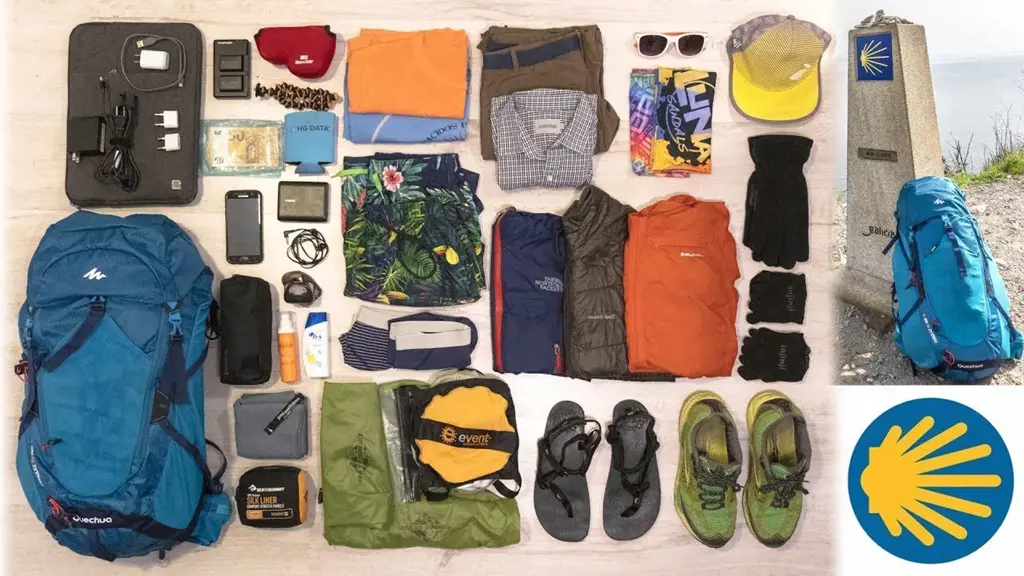
The Camino de Santiago is a long-distance pilgrimage route in Spain that attracts thousands of walkers and cyclists each year. Whether you are planning on completing the full Camino or just a portion of it, it is essential to have the right clothing and gear to ensure a comfortable and enjoyable journey.
One of the most important items you will need for the Camino is a good pair of walking shoes or boots. These should be lightweight yet sturdy, with good ankle support and a comfortable fit. It is recommended to invest in a pair of shoes or boots that have been specifically designed for walking long distances. Many pilgrims also choose to bring a pair of lightweight sandals or flip-flops for wearing around the albergues (hostels) in the evenings.
In terms of clothing, it is important to have lightweight, moisture-wicking materials that will keep you cool and dry while walking. Avoid cotton as it tends to retain moisture and can lead to chafing and discomfort. Instead, opt for synthetic fabrics such as polyester or nylon, or merino wool which is known for its moisture-wicking properties and odor resistance.
A good rain jacket is also essential, as the weather on the Camino can be unpredictable. Look for a jacket that is waterproof, breathable, and lightweight so that you can easily pack it away when not in use. Additionally, a hat or cap is recommended to protect you from the sun, along with sunglasses and sunscreen.
Other essential items include a backpack, a sleeping bag, and a lightweight towel. Your backpack should be large enough to carry all your essentials but not too heavy that it becomes a burden. Look for one with a supportive hip belt and padded shoulder straps for added comfort. Your sleeping bag should be lightweight and compact to save space in your backpack, while your towel should be quick-drying.
In terms of gear, a good walking stick can be invaluable on the Camino. It will help to reduce the strain on your joints and provide support while walking uphill or downhill. If you plan on cycling the Camino, a helmet is a must along with padded shorts for added comfort.
It is also worth investing in a good guidebook or map to help navigate your way along the Camino. There are many resources available online and in bookstores that provide detailed information about the route, accommodation options, and points of interest along the way.
Lastly, it is essential to pack a small first aid kit with basic supplies such as band-aids, pain relievers, and blister treatment. It is also a good idea to carry a small sewing kit for any minor repairs to clothing or gear.
In summary, there are several specific clothing items and gear that are recommended for the Camino de Santiago. These include a good pair of walking shoes or boots, lightweight and moisture-wicking clothing, a waterproof rain jacket, a hat or cap, a backpack, a sleeping bag, a towel, a walking stick, a helmet (if cycling), a guidebook or map, and a small first aid kit. By being well-prepared and having the right gear, you can ensure a comfortable and enjoyable journey along this historic pilgrimage route.
Essential Items to Pack for a Transatlantic Cruise in November
You may want to see also

Should I bring a sleeping bag or is accommodation provided along the Camino de Santiago route?
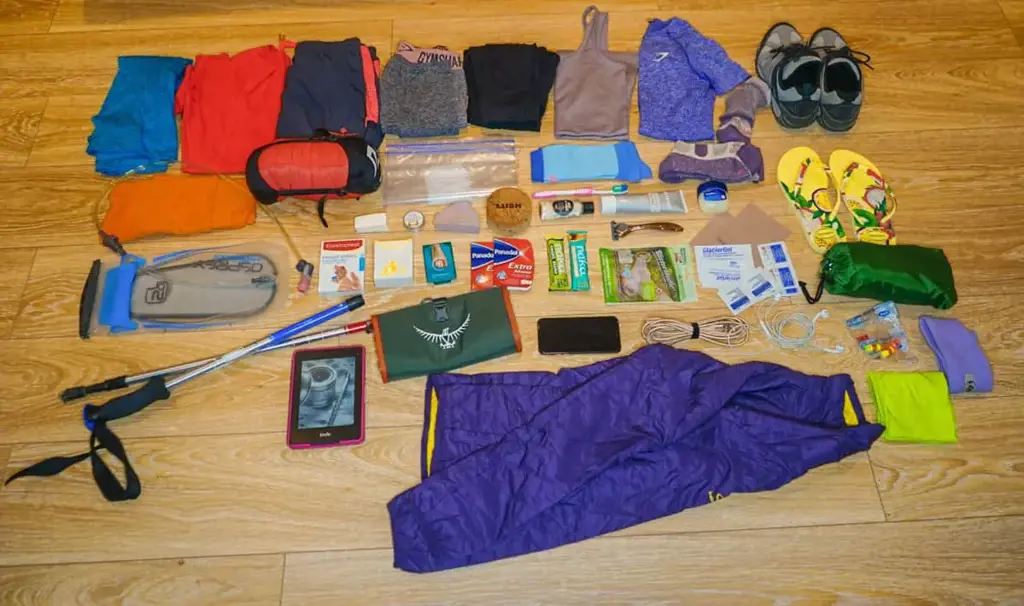
The Camino de Santiago is a popular pilgrimage route in Spain that attracts thousands of travelers every year. One of the most common questions that people have when planning their Camino is whether or not they need to bring a sleeping bag with them. The answer to this question depends on a few factors.
Firstly, it is important to note that there is no one-size-fits-all answer to this question. The accommodation options along the Camino de Santiago can vary depending on the route you choose, the time of year you go, and your personal preferences.
However, in general, there are a variety of accommodation options available along the Camino de Santiago. These can include albergues (hostels), hotels, pensions, and even campsites in some areas. In many cases, these accommodations provide basic necessities such as a bed, blankets, and pillows. Some may even provide towels and toiletries.
That being said, there are a few instances where having a sleeping bag can be beneficial. For example, if you are planning to stay in albergues, it is common for these accommodations to provide only a bunk bed with a mattress. In some cases, they may not provide blankets or pillows. In these situations, having a sleeping bag can provide you with a warm and comfortable sleeping environment.
Additionally, if you are planning to walk the Camino de Santiago during the winter months, bringing a sleeping bag is highly recommended. The temperatures can drop significantly during this time, especially in higher altitudes. Having a sleeping bag will ensure that you stay warm and comfortable throughout your journey.
It is worth mentioning that the weight and size of your sleeping bag can also play a role in your decision. If you are trying to minimize the weight of your backpack, you may want to opt for a lightweight and compact sleeping bag that can easily be packed. There are many options available on the market designed specifically for travelers and hikers.
Ultimately, the decision to bring a sleeping bag or rely on provided accommodation is a personal one. It is important to consider the specific details of your trip, such as the route, time of year, and your own comfort preferences. It may also be helpful to gather information from other travelers who have walked the Camino de Santiago to get their insights and recommendations.
In conclusion, while there are accommodation options available along the Camino de Santiago, it is advisable to bring a sleeping bag, especially if you are staying in albergues or walking during the winter months. A sleeping bag will provide you with peace of mind and ensure a comfortable and restful night's sleep. Remember to choose a sleeping bag that suits your needs and consider its weight and size when packing for your journey.
Must-Have Items to Pack for a 7 Day Cruise to Mexico
You may want to see also

What are some important non-essential items that could also be helpful to pack for the Camino de Santiago?
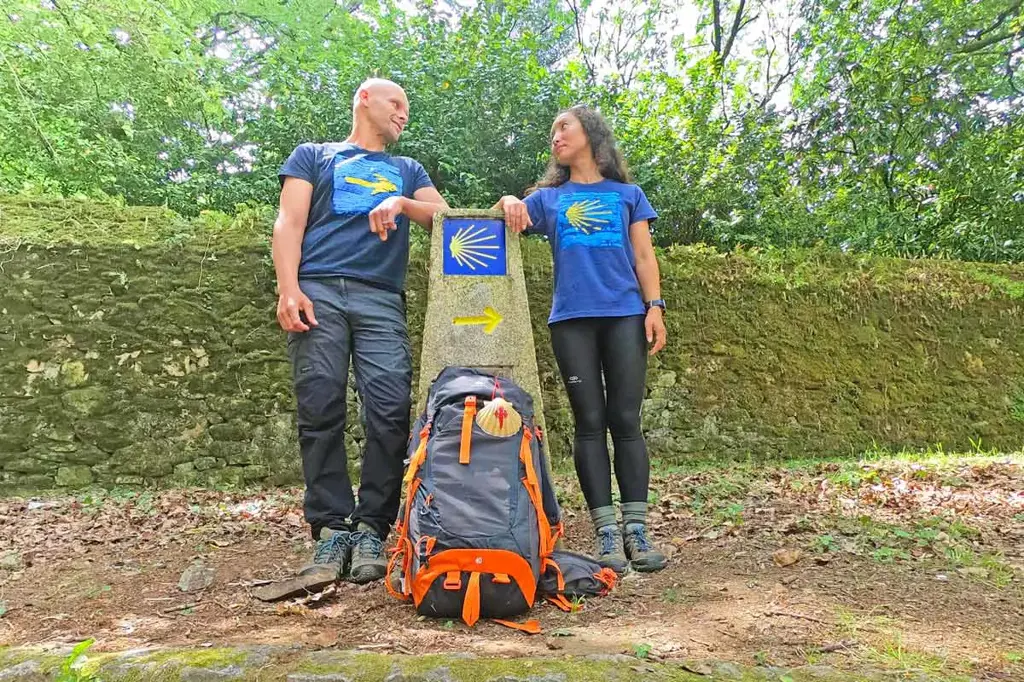
When preparing for the Camino de Santiago, it is important to pack the essential items such as comfortable walking shoes, a backpack, and a guidebook. However, there are also several non-essential items that can greatly enhance your experience.
One important non-essential item to consider packing for the Camino de Santiago is a lightweight camping hammock. While accommodations are readily available along the trail, having a hammock allows you to take advantage of the many beautiful and peaceful spots along the way. Whether it's for a mid-day siesta or a peaceful night's sleep, a hammock can provide a much-needed break from the crowded albergues.
Another non-essential but incredibly useful item is a portable phone charger. While most albergues have access to electricity, it can be difficult to find a free outlet, especially when there are many other pilgrims competing for the same resources. A portable phone charger can ensure that you have a fully charged phone at all times, allowing you to navigate the trail and stay connected with loved ones back home.
In addition to a phone charger, a power bank can also be a valuable item to pack. This device can charge not only your phone but also other essential electronics such as a camera or GPS device. It provides an extra source of power, especially during long stretches without access to electricity.
A small portable clothesline can also be extremely helpful on the Camino de Santiago. While most accommodations provide laundry facilities, they can sometimes be crowded or limited in availability. Having a clothesline allows you to easily hang up your washed clothes to dry, saving you time and potentially avoiding the need to wait for laundry services.
Finally, a lightweight travel towel is a great non-essential item to have on the Camino de Santiago. These towels are quick-drying and compact, making them ideal for a multi-day trek. They can be used for drying off after a shower, cleaning up spills, or as a makeshift blanket or picnic mat when needed.
Overall, while these items may not be essential for completing the Camino de Santiago, they can greatly enhance your experience and make your journey more comfortable. Whether it's a hammock for peaceful breaks, a portable phone charger for staying connected, or a clothesline and travel towel for practical purposes, these non-essential items are worth considering when packing for the Camino de Santiago.
Must-Have Items to Pack for a Memorable Christmas Market River Cruise
You may want to see also

Are there any specific items that should be left behind or avoided when packing for the Camino de Santiago?
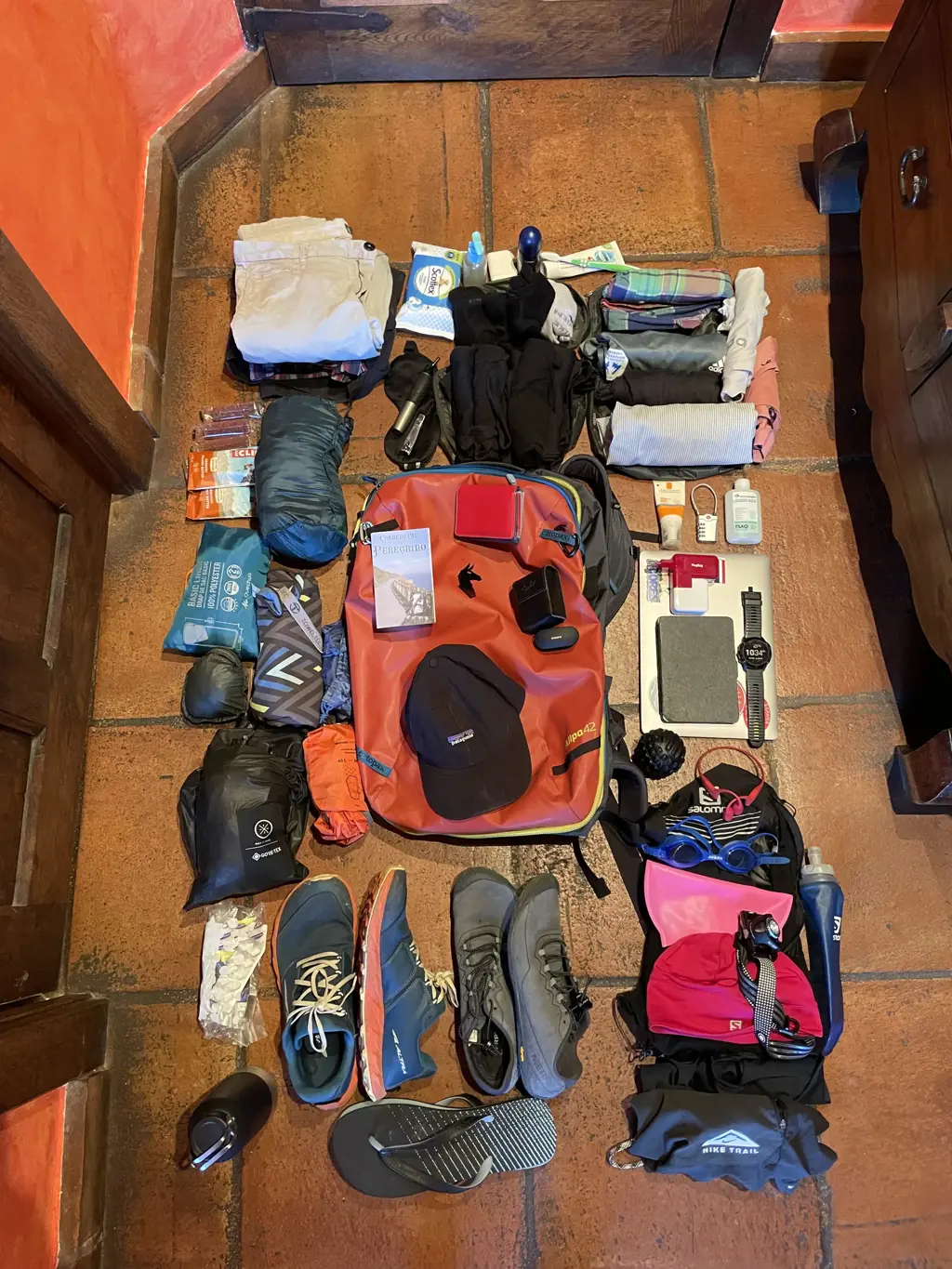
When packing for the Camino de Santiago, it is important to pack efficiently and only bring essential items. Walking long distances every day can be physically demanding, so the last thing you want is to be weighed down by unnecessary items. Here are a few specific items that should be left behind or avoided when packing for the Camino de Santiago:
- Heavy Clothing: It's important to pack lightweight clothing that is suitable for the weather conditions on the Camino de Santiago. Avoid packing heavy jackets, thick sweaters, and bulky items that will take up space and add weight to your backpack. Instead, opt for lightweight layers that can be easily layered or removed as needed.
- Non-Essential Electronics: While it can be tempting to bring along your laptop, tablet, or other non-essential electronics, it's best to leave them behind. These items add extra weight to your backpack and can be easily damaged or stolen along the way. Instead, consider bringing a lightweight smartphone that can serve multiple purposes, such as a camera, GPS, and communication device.
- Excessive Toiletries: When it comes to toiletries, less is more. Bring travel-sized bottles of shampoo, conditioner, toothpaste, and other essential items. Avoid packing full-sized bottles or unnecessary toiletries that can easily be purchased along the way. Also, consider using solid toiletries such as bar soap and shampoo bars, as they are lightweight and more environmentally friendly.
- Heavy Footwear: It's crucial to have comfortable footwear for the Camino de Santiago, but that doesn't mean you have to sacrifice weight. Avoid packing heavy hiking boots unless you have a specific foot condition that requires them. Instead, opt for lightweight, breathable, and comfortable hiking shoes or trail runners. Make sure to break them in before starting your journey to avoid blisters and discomfort.
- Excessively Large Backpack: It's easy to overpack when you have a large backpack, so opt for a smaller, lightweight backpack that will force you to be selective with your items. A 30-40 liter backpack is generally sufficient for most pilgrims on the Camino de Santiago. Remember, you'll be carrying your backpack for long stretches, so the lighter, the better.
- Unnecessary Safety Gear: While safety is important, it's not necessary to bring excessive safety gear. Leave behind heavy and bulky items such as large first aid kits, walking sticks, and other equipment unless you have a specific need for them. Instead, pack a basic first aid kit that includes essential items like band-aids, blister treatment, pain relievers, and any necessary prescription medications.
- Multiple Changes of Clothes: Although it's important to have clean clothes, you don't need to pack a new outfit for every day of your journey. Plan on doing laundry along the way or consider lightweight, quick-drying clothes that can be easily washed and dried overnight. This will help reduce the weight of your backpack and ensure you have clean clothes when needed.
Remember that every item you pack adds weight to your backpack, so it's important to be mindful of your choices. Pack smart, pack light, and focus on bringing only the essentials for a successful Camino de Santiago journey.
Must-Have Essentials for a Teenager's Carry-On Bag
You may want to see also
Frequently asked questions
Some essential items to pack for the Camino de Santiago include a comfortable pair of hiking boots or shoes, moisture-wicking socks, lightweight and quick-drying clothing, a hat or cap for sun protection, a lightweight and waterproof backpack, a sleeping bag, a first aid kit, a sturdy water bottle, a headlamp or flashlight, sunscreen, and a lightweight towel.
It is recommended to bring a couple of sets of clothes for the Camino de Santiago. This includes a set of hiking clothes, including a moisture-wicking shirt, hiking pants, and a lightweight jacket or fleece for cool evenings. Additionally, pack a set of comfortable clothes for sleeping and relaxing in the evenings. You can wash your clothes at the accommodation along the Camino or take advantage of laundry facilities in the towns you pass through.
While most accommodations along the Camino de Santiago provide basic toiletries such as soap and shampoo, it is recommended to bring your own travel-sized toiletries. This includes a toothbrush, toothpaste, travel-sized shampoo and conditioner, a small towel, and any other personal hygiene items you may need. These can be easily packed in a small toiletry bag.
Bringing a walking stick or trekking poles can be helpful on the Camino de Santiago, especially on more challenging terrain or in steep uphill or downhill sections. Walking sticks can help with balance, stability, and reducing strain on the joints. If you already use walking sticks while hiking or have joint issues, it is recommended to bring them along. However, it is not essential, and many pilgrims complete the Camino without them.
For the winter season, it is important to pack warm and waterproof clothing, as temperatures can drop and rain or snowfall is common. Layering is key to adjust to changing temperatures. In the summer, lighter and breathable clothing is essential to combat the heat. Sun protection, including a hat and sunscreen, is also crucial. In other seasons, it is recommended to check the weather forecast and pack accordingly, including both warm and cool weather clothing options.






